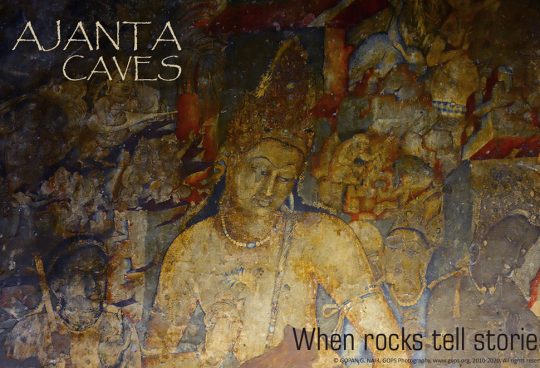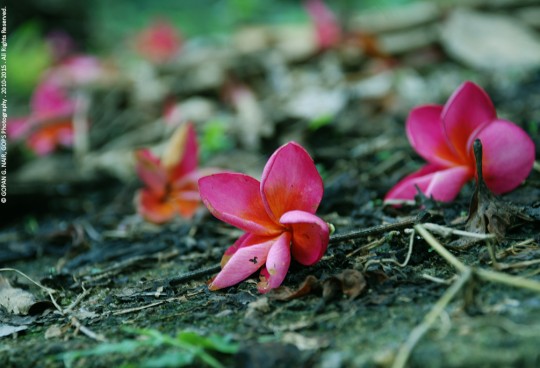BADAMI, (ಬದಾಮಿ or Vatapi as it was known originally), is a historic temple town situated in the Bangalkot district of Northern Karnataka, India. The town mentioned as ‘Badiamaioi’ by Greek Geographer Ptolemy (150 AD) has been recognized as Badami.
Badami served as the seat of power for the Chalukya dynasty, which held sway over various regions of Karnataka from 540 to 757 AD. Located 460 kilometers away from Bangalore, the town of Badami is nestled at the entrance of a gorge shielded by massive red sandstone cliffs on both sides, featuring the picturesque Agastya lake at its center.
It is said that the town of Badami derived its name from an asura named Vatapi, who was defeated by the sage Agastya. The Chalukya rulers strategically fortified the hills near the town and constructed numerous temples in the vicinity. The architectural marvels found at Badami, Pattadakkal, Aihole, and Mahakuta serve as prime illustrations of Chalukya craftsmanship.
The rock-cut cave temples constructed between the 6th and 8th centuries AD are the most renowned within this group of temples.
The celebrated Carnatic recital “Vatapi Ganapatim Bhaje” dedicated to lord Ganesha at Vatapi, was composed by Muthuswami Dikshitar. After the Chalukyas were vanquished by the Pallavas in the 7th century, the statue of Vatapi Ganapati was moved to TamilNadu, where it is now situated at Uthrapathiswaraswamy Temple, near Thanjavur.
The construction of Badami Cave Temples dates back to the reign of King Pulikeshi-I between 600 and 700 AD. These temples showcase a unique combination of North Indian Nagara and South Indian Dravidian architectural styles. Within the four caves, Shaivism, Vaishnavism, and Jainism were all practiced simultaneously, highlighting the religious tolerance of the Chalukya rulers. Cave-1 is devoted to Lord Shiva, while Caves-2 and 3 are dedicated to the worship of Lord Vishnu, and Cave-4 served as a Jain shrine.
Be cautious of monkeys who are skilled at stealing belongings. It is advisable to refrain from carrying bags or food items to prevent them from snatching your possessions.
Cave-1, dating back to 578 AD, is the most ancient among all the caves. Ascend a staircase to reach a rectangular sanctum adorned with numerous pillars and intricate carvings of Lord Shiva and Parvati in various postures. The walls, pillars, and ceiling are lavishly decorated with ornamental designs and murals. The main highlight of the cave is the 18-armed Nataraja statue of Shiva, famously known as the ‘Lord of Dance’. Each pair of hands on the statue represents a mudra from the Bharatanatyam dance form, totaling to 81 mudras depicted in this remarkable sculpture. Ganesh, the son of Shiva, can be seen observing the dance or attempting to mimic his father. Nandi, the bull, is also depicted standing beside Nataraj in the sculpture. Adjacent to the Nataraja statue is a magnificent sculpture of the goddess Mahishasuramardini. Additionally, the cave features an idol of Shiva with Lakshmi and Parvathi on either side. The ceiling of the cave is adorned with a motif of Nagaraja, the serpent king.
Cave-2, constructed during the 6th century AD, bears resemblance in both dimensions and architecture to Cave-1. This cave is devoted to Lord Vishnu in the Trivikrama form, where he is portrayed standing with one foot on Earth and the other directed towards the North. Additionally, Vishnu is also represented in the forms of Krishna and Varaha within this sacred site.
The entrance is guarded by the Dwarapalaka, who holds a flower. Above, the ceiling is adorned with a wheel featuring sixteen fish spokes and swastikas enclosed in square frames.
Cave-3, built in 578 AD, stands out as the largest among all the caves. It is a shrine devoted to Lord Vishnu in his different forms. The interiors of the cave are intricately carved, showcasing numerous reliefs of Vishnu such as standing Vishnu, Vishnu holding a serpent, and avatars like Narasimha, Varaha, Harihara, and Trivikrama. The ceiling is adorned with mural paintings of Lord Brahma, with a lotus medallion etched on the floor below it.
Cave-4 was constructed as a Jain sanctuary during the late 6th or early 7th century. Inside, visitors can admire the exquisite carvings of Bahubali (Mahavir) and various Tirthankaras from the Jain faith that decorate the inner sanctum.
Badami Fort spans across two hills, much of which was destroyed due to conflicts between the Chalukyas and Pallavas. King Pulakeshi I of the Chalukya dynasty built the fort during his rule from 543-566 AD, establishing it as the capital of the Chalukya empire. Visitors can access the hilltop via rock-cut steps starting from the archaeological museum, although the climb is steep and quite strenuous. It is advisable to carry an ample supply of water and be cautious of monkeys. Within the fort are large granaries, along with two temples – the Lower Shivalaya dedicated to Ganesh and the Malegitti Shivalaya dedicated to Shiva at a higher elevation. Legend has it that the Vatapi Ganapathi idol was originally housed in the Lower Shivalaya temple. Additionally, the fort contains treasuries and a cannon installed by Tipu Sultan in the 17th century.

THE LOWER SHIVALAYA DEDICATED TO LORD GANESHA. IT IS BELIEVED THAT VATAPI GANAPATHI IDOL WAS ORIGINALLY LOCATED HERE.

CLIMBING UP THE HILL COULD BE TIRESOME . IT IS NICE TO SEE THE DIFFERENT ROCK TEXTURES ON YOUR WAY UP .
Additional significant sights in Badami include the Bhutanatha temple and Mallikarjuna temples located alongside a reservoir known as the Agasthya Tirtha.
It is important to explore other tourist attractions such as Pattadakal, Aihole, and Mahakuta, located near Badami. Pattadakal, a historic village, is approximately 20 km away from Badami. Aihole, another significant archaeological site, is situated 14 km from Pattadakal. These locations boast numerous stunning temples dating back to the 6th and 7th centuries AD. The journey through these rural roads is quite fascinating, passing by sunflower gardens and lush farms. The natural beauty of the countryside is truly remarkable.

PATTADAKAL. AN EXQUISITE CARVING OF NANDI THE BULL. PARTLY DAMAGED. LOOK AT THE FINE DETAILS OF THE ROPE !!
Mahakuta, located 14 kilometers from Badami, is a village with a temple complex that includes several temples, the most significant being the Mahakutesvara temple and the Mallikarjuna temple. The Vishnu Pushkarni pond, filled by a natural spring, holds great importance for pilgrims visiting the complex, who believe it is auspicious to take a holy dip in its waters. Additionally, a small shrine in the middle of the tank houses a special Shiva Linga known as the Panchamukha linga or five-faced linga.
Best time to visit :
- The temperature could shoot upto 45°C during summer . The best time to visit Badami would be October to February .
How to reach :
By Road :
- Bangalore – Tumakuru – Chitradurga – Hosapete – Kushtagi – Badami : 454 Km.
- Bangalore – Bellary – Hosapete – Kushtagi – Badami : 513 Km.
- Pune – Satara – Kolhapur – Badami : 460 Km.
- Pune – Solapur – Vijayapura – Bangalkote – Badami : 471 Km.
- Hyderabad – MahbubNagar – Raichur – Badami : 424 Km.
- Hampi – Hosapete – Kushtagi – Badami : 150 Km.
- Badami – Pattadakal : 20 Km.
- Badami – Aihole : 34 Km.
- Badami – Mahakuta : 14 Km.
By Air :
- Nearest airports are Hubli (106 km) and Belgaum (150 km)
By Rail :
- Badami Railway Station has good connectivity with Bangalore, Hubli, Bijapur, Gadag, Solapur and other cities.





















































Ezhil Ramalingam
April 23, 2015
Dear Gopan
This is perfect to the core. Those magnificent statues and reliefs take me to the 6th and 7th centuries in a time machine !!! Those wonderful stone marvels are so inviting that I have to plan again for my visit to this magical land !! Thanks for sharing !!
GOPAN NAIR
April 23, 2015
Thank you very much for your usual support & guidance, dear Sir.
Kaaviyam
May 08, 2015
Marvelous art work with amazing fine details on those sculptures…are well captured and presented. Thanks a lot for sharing this historical journey!!
GOPAN NAIR
May 09, 2015
Thank you my friend. India is a treasure land.
Hari Madhavan
May 09, 2015
An exquisite piece of storeytelling both in pictures and in factshare . Humbled at the beauty and heritage that you’ve stretched out before us. By the way-the photostram look absolutely classy: which lens has been used ? Would like to know. Cheers, and thanks for this article.
GOPAN NAIR
May 09, 2015
Thanks for your comments, Hari Madhavan. Appreciate it.
Regarding the equipment used : I will be writing articles on photographic gear & techniques . Please wait for the same.
DR. PAWAN JAIN
February 25, 2017
Superb photographs with details. Art historians delight. Thank you for the treat.
GOPAN NAIR
February 27, 2017
Thanks very much doctor, for your valuable comments. India is a land of unlimited possibilities. Let’s explore it together. Don’t forget to drop-in whenever you get some spare time.
Vijay Rathore
December 09, 2018
Such a wonderful write up !! It was indeed a treat to the eyes. Visited the place after going through your blog. Thanks & keep up the good work.
GOPAN NAIR
December 10, 2018
Those were really encouraging words and thank you for the same. Please do check my pages frequently for more interesting articles.
SAM ADAMS
January 12, 2019
Very interesting write up and pictures. Great work. Keep it up.
GOPAN NAIR
January 12, 2019
Thank you very much for your visit & comments. Appreciate it.
Anoop Negi
July 04, 2024
Lovely. Chanced upon this while looking up the cave number location of the Narasimha statue at Badami
GOPAN NAIR
July 05, 2024
Thanks Anoop, for the visit. Long time..No see..